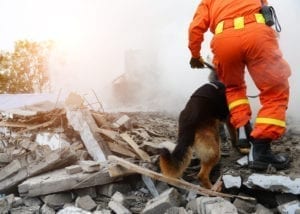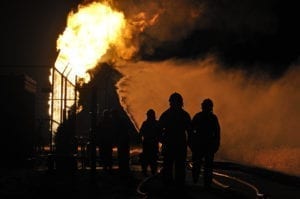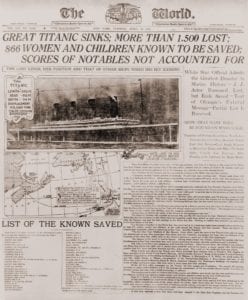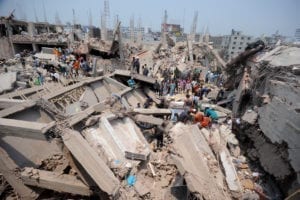
As workplace safety advocates grow stronger, so to do their detractors grow louder. It seems commonplace for any type of discussion that takes place on the internet that for every ten people who are totally for something there is one very loud person against it. Workplace safety discussion is no exception to this.
In 2010, New Zealand’s Pike River disaster killed 29 workers and prompted one of the country’s largest workplace health and safety reforms in their history. This was hailed as a step in the right direction and then of course, predictably, slammed by many opponents who saw it as government hand-holding and covering everything in cotton wool.
The thing is, we need health and safety standards. Why are they so important? Well, to know that, you need to look, not at where we are now, but where we came from. What follows are the five worst workplace disasters in history.

The Halifax Explosion – 2,000 dead, 9,000 injured
On the morning of the 6th December 1917, Halifax, Canada, the world bore witness to the largest man-made pre-atomic explosion in history.
On that morning, the French ship, the SS Mont Blanc, collided with the Norwegian vessel, the SS Imo. The SS Imo was carrying relief supplies for the war effort and was in a rush to get out of the harbour. The SS Mont Blanc had both right of way and and a cargo full of explosives. The explosion was equal to about 2.9 kilotons of TNT; the largest in history up until that point, and the largest until the atomic bomb.
The resultant death toll was approximately 2,000 people from both the boat and onlookers on the harbour with another 9,000 injured.
Though many factors were in play, it is understood that the disaster would have been avoided had safety protocols not been relaxed as a result of WW1 being in full swing at the time.
The Bhopal Gas Leak – Up to 16,000 dead

The Bhopal disaster took place on the night of the 2nd of December 1984 at Union Carbide India Limited. Union Carbide India was a pesticide plant located in Bhopal and this disaster is considered to be the world’s worst industrial disaster.
A tank containing methyl isocyanate ruptured releasing 30 metric tonnes of the highly toxic gas into the atmosphere within an hour.
Estimates on the final death toll do vary but some estimates have the long-term death toll placed at a shocking 16,000 people.
Though Union Carbide India still dispute the causes of the disaster, it has been argued by the Indian government and local activists that extremely poor maintenance and poor management were to blame. With safety systems offline, many gas scrubbers offline, a pipe cleaning system offline, and many valves and lines in very poor condition it seems clear that criminally negligent maintenance of plant and equipment played a part; if not; was totally responsible for the disaster.
The Sinking of the Titanic – 1,503 dead

Bet you weren’t expecting to see this in here.
On the night of the 14th of April, 1912 the RMS Titanic, otherwise known as the unsinkable ship, hit an iceberg and sunk on its maiden voyage in the North Atlantic ocean. In total 1,503 people died in the incident out of the 2,208 passengers and crew. You may already know this story, but have you ever thought of it from a health and safety standpoint?
Think about all of the failures in health and safety procedures that occurred:
- Emergency Equipment: There were only enough lifeboats to accommodate 1,178 people.
- Training: The lifeboats were launched under-capacity saving only 705 of those people.
- Procedures: The RMS Titanic ignored SIX iceberg warnings before it crashed headfirst into an iceberg at near full speed.
- Policies: Contrary to popular belief, the RMS Titanic didn’t have too few lifeboats to save room on the deck. They had too few lifeboats because the White Star Line’s policies were horribly out of date and didn’t require the Titanic to have more lifeboats than that.
And the list goes on. I could write an entire blog about the Titanic’s poor OHS management (in fact I might). But what’s clear is that in almost every conceivable way, The White Star Line failed to prepare for this disaster.
This disaster lead to the creation of the International Convention for the Safety of Life at Sea (SOLAS), which still governs maritime practices to this day.
Honkeiko Colliery Mining Disaster – 1,549 dead

This disaster took place on April 26, 1942, during the height of WW2, in the Japanese captured Honkeiko Colliery Coal Mine in the eastern Liaoning province in China. On that day there was a gas explosion in one of the shafts beginning what would be known as the worst mining disaster of all time.
After a brief period of evacuation in an attempt to starve the fire of oxygen, the Japanese shut off the ventilation, sealing over 30% of the workforce in the burning mine. In total, 1,549 people died 31 of whom were Japanese, the rest of which were forced Chinese workers.
It should be pointed out that the conditions in that mine were deplorable to begin with. This disaster was simply the culmination of the mine operator’s lack of concern with its workers’ safety.
Rana Plaza Collapse – 1,130 dead

During rush hour on the 24th April 2013 in the Savar Upazila of Dhaka, Bangladesh, the Rana Plaza building collapsed, killing 1,130 people and injuring another 2,500.
This eight story building had been built upon an old pond, was four stories higher than approved, was being used for industrial use instead of its commercial designation and was made from substandard materials. It’s reasons for falling aren’t hard to discern. Perhaps the truly terrible thing about that death toll was that it was almost avoided.
Many businesses had closed immediately after cracks had appeared on the lower floors. The building’s owners ignored the concerns and ordered workers back into the building. On the day workers returned, the building collapsed.
The response for this disaster was swift with 42 people charged with murder including the building’s owners.
So why bring up all of this death and destruction?
These disasters are reminders; reminders of what happens when you have insufficient health and safety laws or when laws aren’t followed. The situation we find ourselves in today often causes adversaries to these laws to claim that they’re living in a “nanny state” or that workers today are covered in “cotton wool”.
The thing is though, that without these protections, these kinds of disasters do happen and a lot of people’s lives are destroyed. Every single one of these disasters have lead to substantial changes in how people view safety and if you forget these disasters then yes, perhaps you could argue that some laws seem like they take it too far. But really, you only have to look back a few short years and you’ll see that without them, we’d be in a much worse position.